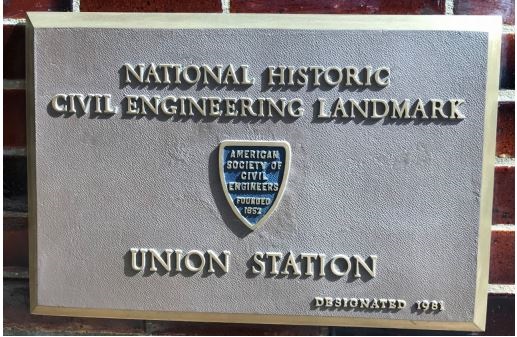Union Station
38 37 41.2 N, 90 12 28.8 W
In the early 1900s, Union Station was the hub of passenger railroad traffic in the central United States. It was one of the first stations to serve as a centralized terminal for multiple railroad lines. It originally served 22 rail lines; 13 from the east and nine from the west.
The station's trainshed, 700 feet long and 606 feet wide, used the longest metal roof trusses ever constructed to span 32 sets of tracks. Structural engineer George H. Pegram served as the chief design engineer for the project and used a patented configuration of his own design, known as the Pegram truss.
Union Station offered travelers a rich visual experience. Gilded ribs highlight the barrel-vaulted ceiling in the large, main waiting room; a stained glass window shows scenes of San Francisco, St. Louis, and New York; a great clock tower ascends 232 feet. The station ceased operating as an active train terminal in 1978, and reopened in 1985 as the largest adaptive re-use project in the United States, providing shopping, dining, entertainment, and hotel accommodations.


